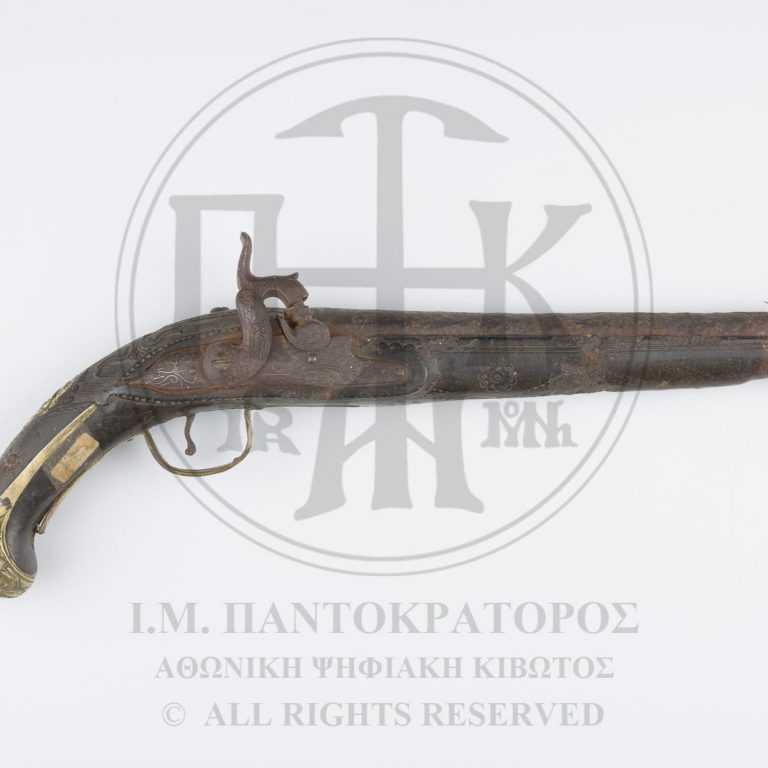The Greek Revolution for Independence, 1821
The Athonites supported the revolution led by Emmanuel Pappa in Eastern Macedonia by every means possible, even providing him with the cannons from the towers. Unfortunately, his failed campaign opened the ‘sack of Aiolos’ for the Athonites: In 1822, Ottoman forces entered Mt Athos and based themselves inside the monasteries, forcing the monks to provide for their needs. In a document from 1827, two officials of the Monastery, the Prior Theoclitos and the Elder Agapios comment that: 'Now that it is known what has happened, we will be deprived of good bread.'
Most of the monks at the Monastery, as well as the other Athonite monks, had already abandoned Mt Athos before the invasion of the Turkish troops. They left on boats belonging to the Monastery, first sailing to Thasos and from there to Skopelos, taking all the valuables of the Monastery with them. Upon their arrival in Skopelos, the artefacts were recorded and given to Droso Mansolo and Kyriako Tasika, two high-ranking representatives of the Hellenic Parliament of Corinth, for the purpose of using the items to help meet the needs of the revolution. According to K. Notara, the Minister of the Hellenic Economy at that time, the silver and gold obtained from the artefacts amounted to 6,250 γρόσια (grosia, Turkish coins). Any artefacts which were not used were taken to the Monastery of the Great Cave in the Peloponnese, from where they were eventually returned to the Monastery in 1830, after the withdrawal of the Turkish troops from Mt Athos, by order of the first Governor of Greece, Ioannis Kapodistrias.
Most of the monks at the Monastery, as well as the other Athonite monks, had already abandoned Mt Athos before the invasion of the Turkish troops. They left on boats belonging to the Monastery, first sailing to Thasos and from there to Skopelos, taking all the valuables of the Monastery with them. Upon their arrival in Skopelos, the artefacts were recorded and given to Droso Mansolo and Kyriako Tasika, two high-ranking representatives of the Hellenic Parliament of Corinth, for the purpose of using the items to help meet the needs of the revolution. According to K. Notara, the Minister of the Hellenic Economy at that time, the silver and gold obtained from the artefacts amounted to 6,250 γρόσια (grosia, Turkish coins). Any artefacts which were not used were taken to the Monastery of the Great Cave in the Peloponnese, from where they were eventually returned to the Monastery in 1830, after the withdrawal of the Turkish troops from Mt Athos, by order of the first Governor of Greece, Ioannis Kapodistrias.

